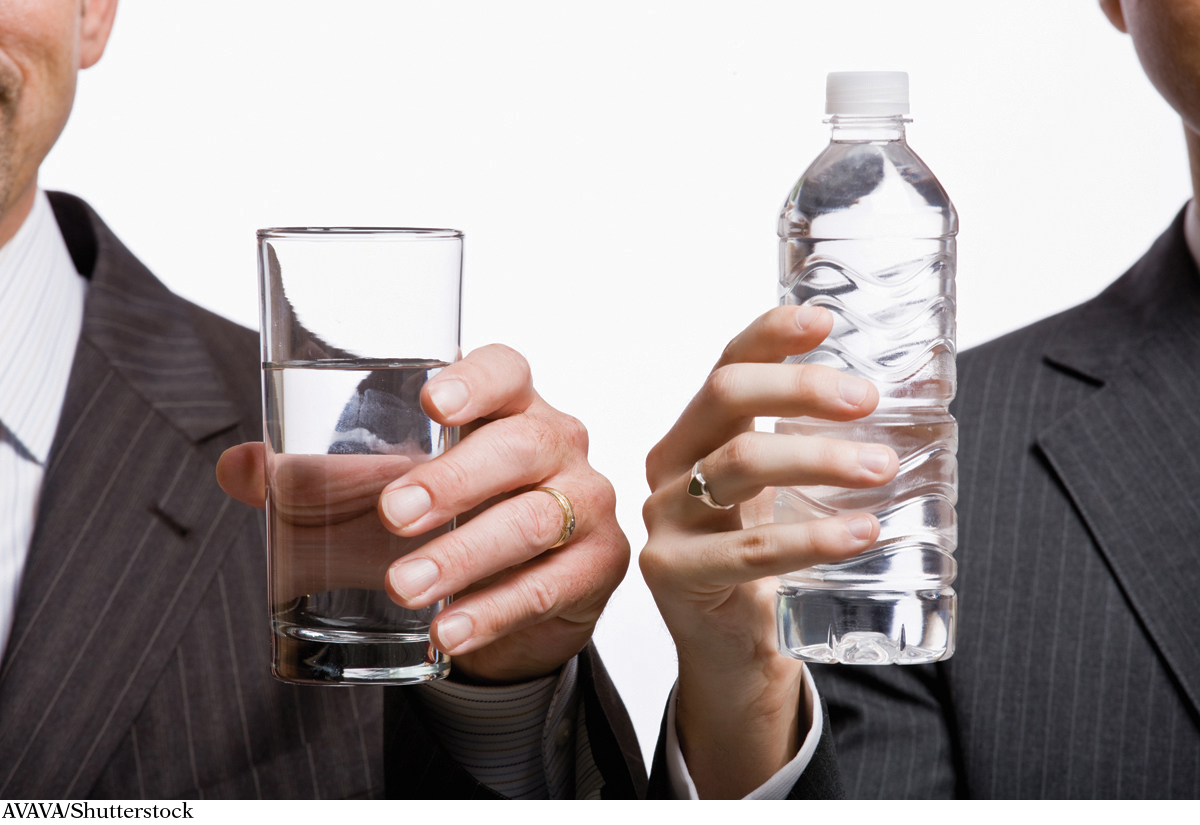WATER INTAKE RECOMMENDATIONS
Because people vary so much in terms of how much water they need each day, there is not an established Recommended Daily Allowance (RDA) or Estimated Average Requirements (EAR) for water. However, in 2004, the Institute of Medicine set an AI value of 3.7 liters (about 15½ cups) of total water intake per day for men living in temperate climates and 2.7 liters (about 11½ cups) per day for women living in temperate climates. (INFOGRAPHIC 13.13)

Question 13.8
 Examine the AI’s for water. How much water are men and women expected to obtain from foods?
Examine the AI’s for water. How much water are men and women expected to obtain from foods?
Men are expected to obtain 0.7 liters of water from food, and women are expected to obtain 0.5 liters from food.

These totals include water from a combination of food, drinking water, and other beverages. Current consumption patterns indicate that fluids provide about 80% of our total water intake, with plain water making up about 45% of those fluids and other beverages making up the rest. Therefore, the AI for fluids is 3.0 liters for men and 2.2 liters for women. (Both tap and bottled water are considered safe to drink; the EPA regulates the former, while the FDA regulates the latter, and they have similar standards.) The body also produces a small amount of water as a byproduct of metabolic reactions, which also helps meet our total water needs.
HYPONATREMIA a condition characterized by a low serum sodium concentration and clinical signs of confusion, nausea, vomiting, bloating, and swelling around brain; may be seen in athletes who consume excess water with no sodium
■ ■ ■
During his marathon, Robinson continued to drink even when he was not thirsty, causing a major water imbalance. But another factor, out of his control, may have contributed to his imbalance, too. Some athletes release excess ADH when exercising vigorously for long periods, making the kidneys retain water. This hormonal reaction likely worsened Robinson’s water imbalance. He then started to feel the common symptoms of hyponatremia, a condition in which sodium levels in the blood become low because of increased blood volume.
DEHYDRATION water deficiency resulting from fluid losses that exceed intake
Unfortunately, the symptoms of hyponatremia sometimes mimic the symptoms of dehydration, or deficiency of water, which is in part why Robinson was given saline at the hospital—
To distinguish between hyponatremia and dehydration, some city marathons now test blood sodium concentrations in unwell athletes before deciding whether to treat for dehydration (which might involve saline) or for hyponatremia (which involves a hypertonic, or high-
Water, one of the six essential classes of nutrients, is vital for life, but any time we overconsume a nutrient, even water, we may encounter trouble. The seven essential major minerals are also vital—